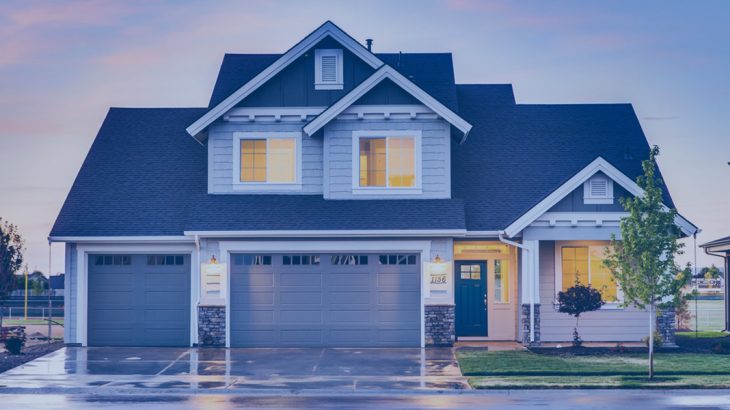Q: Hi, my husband and I got married a few years ago, and we’re now planning on purchasing our first home together! He has about $40,000 in his RRSP and I have about $55,000 in mine. I’m wondering what your thoughts are on the Home Buyers’ Plan. Can you explain how it works? And do you think it’s a good idea for us? Also, what happens if we don’t put the money back into our RRSPs?
A: Great question. First and foremost, like most things in personal finance, the RRSP Home Buyers’ Plan (HBP) isn’t something that’s universally good or bad. It makes sense for some, and not for others. Let’s take a quick look at some of the basics, and some factors you should consider before deciding if the HBP is a good strategy for you.
Home Buyers’ Plan Basics
The HBP allows you, and your spouse, to withdraw up to $25,000 each from your RRSPs, without paying any of the taxes that would ordinarily be due. However, that money has to be put back into your RRSP according to a schedule, and is still taxed when ultimately withdrawn again in the future.
How Do You Qualify?
Note that, in addition to the basics covered here, there are special considerations for people with disabilities.
In order to qualify for the program:
- You must be considered a first-time home buyer
- You must have a written agreement to buy or build a qualifying home for yourself
- You must intend to occupy in the qualifying home as your principal place of residence within one year after buying or building it.
The terms first-time home buyer and qualifying home have very specific definitions in the context of the HBP program. Specifics are spelled out in great detail on the Government of Canada website.
How Do Home Buyers Plan Withdrawals Work?
The maximum that can be withdrawn from your RRSP under the HBP program is $25,000. However, you can’t just contribute the money today and withdraw it tomorrow. According to the Canada Revenue Agency, your RRSP contributions must remain in your RRSP for at least 90 days before you can withdraw them under the HBP.
If you have more than one RRSP account, you can withdraw funds from multiple accounts as long as you are the owner of each RRSP. However, the $25,000 limit still applies – the combined total withdrawal cannot exceed $25,000. Withholding tax does not apply to funds withdrawn from your RRSP under the HBP program.
In order to withdraw funds from your RRSP under the HBP, you are required to complete Form T1036 – Home Buyers’ Plan (HBP) Request to Withdraw Funds from an RRSP.
When Is Repayment Required?
The money withdrawn from your RRSP under the HBP program has to be re-contributed according to a predetermined schedule. No repayment is required in the year of withdrawal, or in the year following. Repayment begins in the second year after the year of withdrawal. For example, if you withdrew from your RRSP under the HBP program in 2017, your first repayment would be due in 2019.
The repayment schedule is spread of 15 years, and the minimum annual repayment amount is 1/15th of the amount withdrawn. For example, if you withdrew $15,000 in 2017, you would be required to pay $1,000 per year from 2019 – 2033 inclusive. Note that this is the minimum required repayment, but you are free to pay more at any time.
As for what happens if you don’t re-contribute the money back into your RRSP, the amount that was required to be re-contributed in any given year (according to the predetermined schedule) will simply be taxed as ordinary income for that year.
Trade-Offs
Taking money out of your RRSP can indeed help you accumulate the down payment you require in order to get the house you want. Of course, you’ll also significantly damage your retirement savings in the process. This would likely affect you in a number of ways, such as having to work longer, or simply having less money in retirement. Is that worth it?
That’s a tough choice, because it’s not really an apples to apples comparison, due to the differences in timeframes. Here’s where a short term goal (your house) is pitted against a long term goal (your retirement). Indeed, it’s not a simple decision.
Consider a couple, age 30, who each take $25,000 out of the RRSPs to buy a house. Here’s a fact – if left inside the RRSP, that $50,000 would have turned into more than $533,000 by age 65!*, assuming that the HBP withdrawals are not repaid.
Again, is that worth it? Is it a fair trade-off? At 30, you probably say yes. Although, at 65, ending up short changed by more than half a million dollars…you might not fully agree with your 30-year old self.
Bottom Line
In short, just because you can take $25,000 out of your RRSP to buy a house doesn’t mean you should. So, what’s the right choice for you? Everyone’s situation is unique, and there is no one-size-fits-all solution. In fact, the HBP plan is one of the many situations where it’s important to crunch the numbers, assess the situation from different angles, and evaluate different strategies. In the end, you want to make sure you’re making informed decisions so that you can construct optimal investment and financial planning strategies.
* Average 7% annual return
